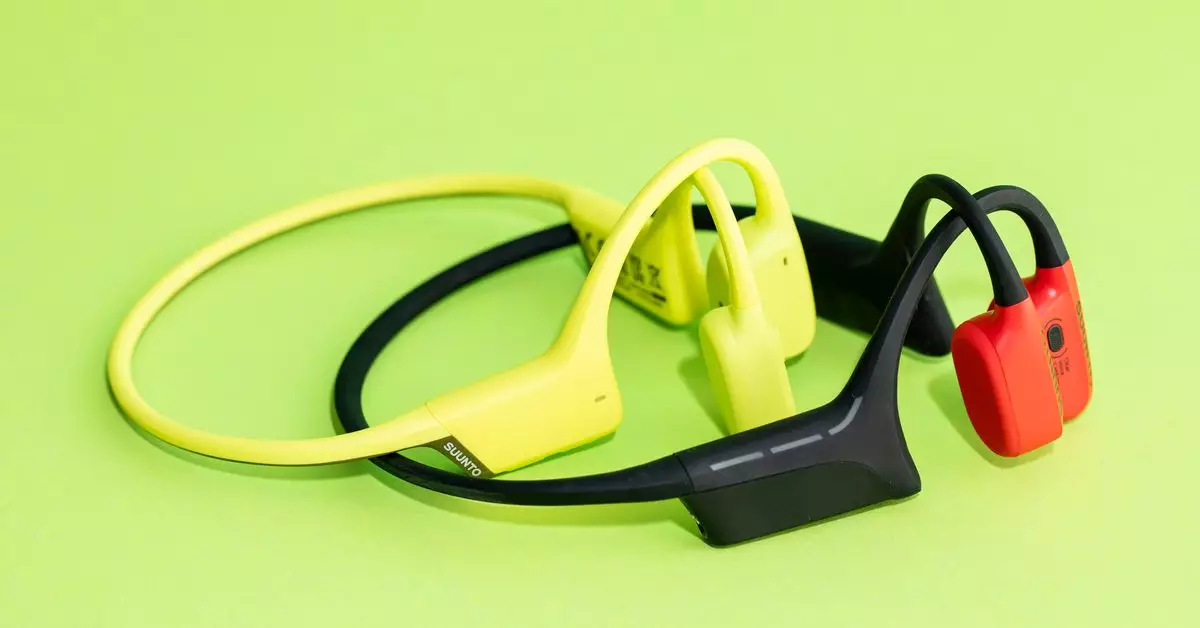Bone conduction headphones have gained popularity for their ability to keep users aware of their surroundings while listening to music or podcasts. As a city runner, the author shares her experience testing the Suunto Wing and Suunto Sonic bone conduction headphones over the course of two months. The review highlights the comfort, sound quality, features, and overall performance of these headphones.
The author praises the comfort of both the Suunto Wing and Suunto Sonic headphones, noting that they are stable and secure during runs and walks. Unlike previous bone conduction headphones she had tried, these headphones did not cause discomfort, even when wearing glasses or headbands. The wraparound design of the headphones was well-received, as it didn’t dig into the skin or hurt the ears. Additionally, the minimal design of the headphones allowed for easy integration with other accessories.
Although bone conduction technology is not known for its bass quality, the author was impressed by the sound quality of the Suunto Wing and Suunto Sonic headphones. While the bass was not as robust as traditional headphones, it was adequate to keep her motivated during runs. The headphones offer various sound profiles, including an outdoor mode that boosts bass slightly, providing flexibility for different listening preferences.
One of the limitations of bone conduction headphones is their performance in loud environments. The author noted that using the Suunto Wing and Suunto Sonic headphones in noisy settings, such as subways or crowded streets, was less than ideal. The need to increase the volume to drown out external noise led to vibrations that affected the overall listening experience. For users who frequently find themselves in loud environments, these headphones may not be the best choice.
The author raises concerns about the pricing of the Suunto Wing and Suunto Sonic headphones, especially when compared to other bone conduction headphones on the market. At $149 and $199 respectively, these headphones are on the higher end of the price range. While the Suunto Wing offers additional features such as LED lighting, a power bank, and head motion controls, the author found these extras to be unnecessary and, in some cases, ineffective. Ultimately, the pricing may deter potential buyers looking for more affordable options.
Both the Suunto Wing and Suunto Sonic headphones offer an estimated 10 hours of battery life, with the Wing including an additional power bank for an extra 20 hours of charge. While the power bank is a useful feature, the author questions whether it justifies the $50 price difference between the two models. In terms of water resistance, the Sonic’s IP55 rating is suitable for sweat and light rain, while the Wing’s IP67 rating falls short of being waterproof for activities such as swimming. The lack of onboard storage and Bluetooth functionality underwater also limits the headphones’ versatility for swimmers.
The author reflects on her experience testing the Suunto Wing and Suunto Sonic bone conduction headphones and acknowledges the benefits of this technology for certain users. While the headphones provided comfort, decent sound quality, and unique features, the limitations in loud environments and pricing raise concerns. The author continues her search for the ideal open-ear workout headphones that can rival traditional options in terms of bass quality and performance.


Leave a Reply